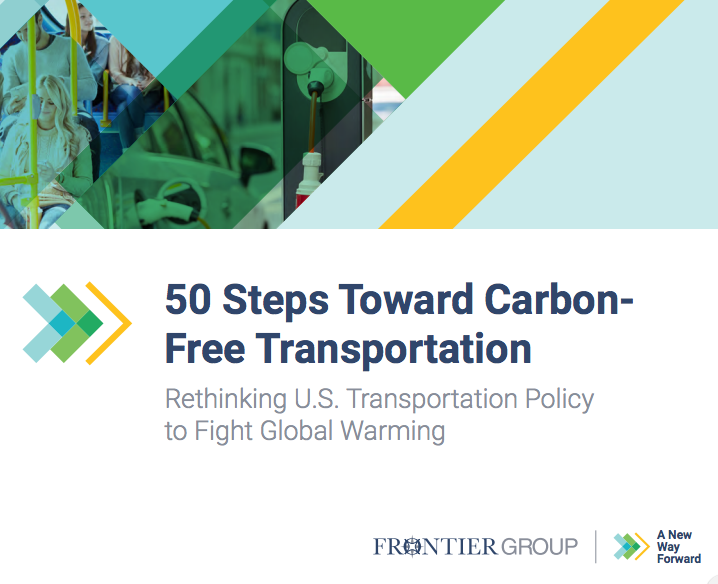What City Observatory did this week
1.Measuring Walkability: Non-car modes of transportation have always been at a disadvantage in policy discussions because of a profound lack of widely available quantitative measures of walkability, and because all of the metrics developed to guide transportation focused on moving cars. That’s begun to change with the advent of Walk Score, which provides a ubiquitous, easy to understand and free ranking of the walkability of every address in the US. Some have criticized Walk Score’s destination based measures as less-than-perfect, but they provide an invaluable baseline and starting point for measuring—and improving walkability.

2. Our civic commons infographic. We’ve summarized some of the key findings from our report Less in Common in the form of a free, downloadable infographic. We show how a combination of factors have led Americans to live lives more separated from one another, measured by everything from where we live to how frequently we socialize to how we travel.
3. Polarity Shift: A key leading indicator of entrepreneurial dynamism and future economic growth is venture capital investment. For decades, Silicon Valley has been the unquestioned leader in VC investment. But in the past five years, its been surpassed by its neighbor to the north, San Francisco, which now accounts for three times as much venture capital investment as does Silicon Valley. This big shift has a lot to do with the growing demand for city living.
4. Playing Telephone. There’s no question that on-line shopping is growing fast and driving big changes in the retail environment, as chain store bankruptcies and closed malls attest. But recently repeated claims that Americans now make more purchases on-line than in-person are a wild exaggeration. We show how a classic game of “telephone” translated a narrow research finding into a eye-catching, but simply erroneous claim. For the record, on line purchases accounted for about 8.1 percent of retail sales earlier this year.
This week’s must reads
1. Two stories on gentrification from the UK. The term gentrification was coined in the UK a half century ago, so its appropriate that it be hotly discussed there. Writing in the Guardian, Dave Hill argues that its time to get our gentrification story straight, and to recognize that change has been ongoing in London for many decades, and that it is one key to the cities economic survival. Hill suggests its time to move past protest politics and develop a constructive, practical and flexible response to shaping urban change to its best and most equitable effect. Edward Clarke at the UK Centre for Cities boldly writes “In defence of gentrification.” He points out that The most successful cities in the UK are also the least affordable to live in, primarily because of the shortage of housing, and because the development of new homes comes nowhere close to matching the growing demand for urban living.” The real problem is not change, but the failure of the planning system to address the UK’s shortage of cities.
2. Fifty steps toward carbon free transportation. While we’ve made great progress in reducing emissions from power plants and industry, transportation has emerged as the single largest source of climate pollution in the United States. In a new report published by the Frontier Group, Tony Dutzik and his colleagues detail six common sense principles to guide policy and list 50 specific steps we can take to move toward carbon free transportation. Most are eminently sensible, but we think #18 is probably the most important: putting a price on carbon, and a price on road use is key to sending signals to consumers and investors about what they need to do to combat global warming. A price for carbon makes every other one of the 49 strategies easier to accomplish.

New knowledge
1. The Atlas of Urban Expansion. New York University’s Marron Center, in cooperation with UN Habitat and the Lincoln Institute of Land Policy has created an Atlas of Urban Expansion. It’s a truly global look at patterns of urban development, with detailed information from 200 cities on six continents. Using satellite imagery, they estimate the extent and density of urban development in 1990, 2000 and 2014, and provide estimates of the width and coverage of the road network. It’s all rendered in colorful, interactive and highly detailed maps. Fourteen US cities are covered, including Los Angeles, Cleveland, Minneapolis and Portland. Here’s their map of urban expansion in Portland.

2. Who votes for Mayor? One of the issues we’ve regularly covered at City Observatory is the “home-voter” hypothesis: the notion that local land use policies reflect the interests of homeowners because they disproportionately turn out for local elections. Additional evidence for this thesis comes from new research from Portland State University (funded by Knight Foundation) which looks at the turnout patterns in local mayoral elections around the country. They find that these local elections attract abysmally low levels of turnout, and perhaps more importantly are highly skewed toward older voters: On average voters in mayoral elections are roughly a generation older than the voting eligible population. Because homeownership is strongly correlated with age, this finding lends considerable credence to the home voter hypothesis—and of course has broader implications for the policy leanings of local governments. The report provides detailed data for 30 of the nation’s largest cities.

